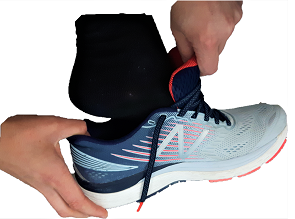
Shoes – Getting the Right Fit
During the day, we are on our feet walking around at work, standing in the kitchen, and running from place to place trying to get through the day. If there is pain in your feet, these daily activities can become frustrating. Proper footwear is important to maintain foot health and to keep you going to the end of the day comfortably. Two things to look for in an appropriate shoe is support and the fit.
Supportive Shoes
Supportive shoes prevent your foot from moving around to reduce strain on the muscles and the structures in the lower body. Any shoe that you wear should have support in the midsole and the heel cup.
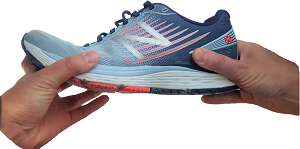
The midsole is the layer between the bottom of the shoe and under your foot/insole. It provides shock absorption at ground contact and cushioning when standing on a hard surface. A strong midsole helps control foot movement through the midfoot (middle area of the foot). To test the midsole, bend the shoe in half or twist the shoe through the middle. The middle of the shoe should not bend easily.
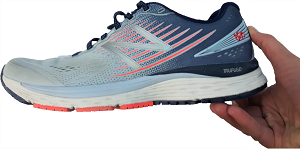
The heel cup, or heel counter, is the area that hugs the back of the heel to control movement at the heel. It can be tested by pushing on that area on the outside of the shoe. A strong heel counter will not bend with the pressure of your thumb.
Appropriate Fit
To find the appropriate fit, look at the length, width, and depth. It is important to be aware of all three factors when choosing a shoe as those with narrow or wide feet tend to wear shoes that are too long or short to accommodate the width or depth.
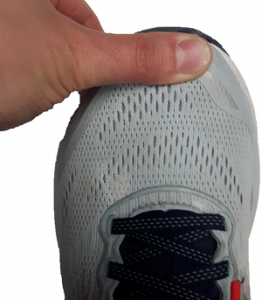
Length
The length of the shoe is what most people look at when fitting shoes. This area should be about a thumb width (0.5”-0.75”) between the end of the longest toe and the end of the shoe. Be aware that the longest toe may be the second toe or the big toe.
Width
Everyone has different foot width and length combinations. Widths typically range from AA to 2E, with regular widths considered to be D for men and B for women. Shoes that are too narrow for the feet may cause pain, callusing, and toe nail issues. The width should be wide enough that the sides of the foot are not bulging out of the shoe. An easy test to do on your own is take the insole out of the shoe and stand on the insole. The widest points of the forefoot should be in line with the corresponding parts of the insole.
Depth
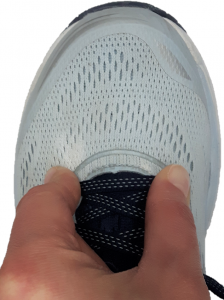
To determine the depth of the shoe, pinch the material above the toes. The material should have some play, but not enough to grab with both fingers. Finding the right shoe with the correct depth can be difficult as each brand fits differently. An easy way to adjust for too much room, is to add an extra insole to the front of the shoe.
When a supportive shoe fits properly, this improves comfort and prevents pain and irritation. With all the activities we do on our feet in a day, foot health and comfort are important for our well-being.
If you have any further questions, feel free to contact us!
You must be logged in to post a comment.

Comments (6)
Pingback: Shin Splints (Medial Tibial Stress Syndrome) | On the Ball Orthotics, Barrie
Pingback: Kids and Their Feet - On the Ball Orthotics in Barrie
Pingback: Shoe Modifications | On the Ball Orthotics, Barrie Foot Clinic
Pingback: Calcaneal Fat Pad Contusion | On the Ball Orthotics, Barrie
Pingback: Finding the Right Shoe for Your Feet | On the Ball Orthotics, Barrie ON
Pingback: The Proper Shoes for Diabetics | On the Ball Orthotics, Barrie ON